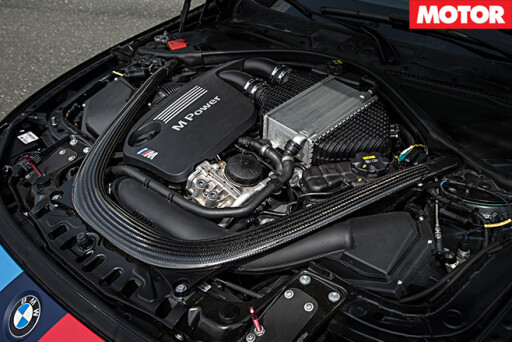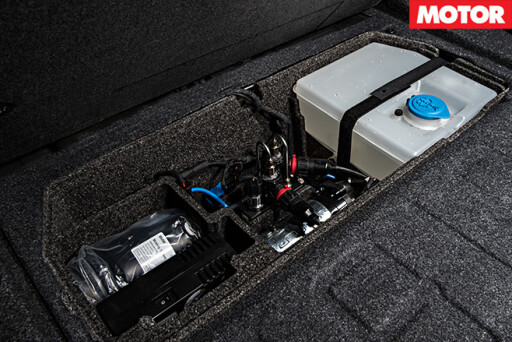
The ‘ideal gas law’ should be familiar to anyone who ever studied thermodynamics.
But for those who were spared that university engineering torture device, it basically says that when you’re talking about a gas, pressure multiplied by volume equals mass multiplied by temperature (there’s a ‘gas constant’ in there, but we won’t go into that).
Why am I telling you this? Because it explains why turbochargers work much better with some form of intake air charge cooling – an intercooler, usually. You see, when a turbo increases the pressure of the air entering an engine, it also increases its temperature, which in turn means the density of the air is decreased.
 A cylinder full of hot, high-pressure, low-density air beats atmospheric pressure any day. And, non-intercooled engines were common in the infancy of turbocharged technology.
A cylinder full of hot, high-pressure, low-density air beats atmospheric pressure any day. And, non-intercooled engines were common in the infancy of turbocharged technology.
A cylinder full of relatively cool, high-pressure, high-density air is, however, much better for two reasons.
Firstly, as the ideal gas law shows, if pressure is increased and temperature is kept low, both the volume and mass of the air entering the engine is increased. This means that, at a fixed maximum boost pressure, an intercooled turbo engine will ingest more air than one without an intercooler and produce more power.
The second reason has implications for both durability and power output. A hot intake air charge will make the engine more prone to pre-ignition or detonation, which is an abnormal mode of combustion that can damage the engine.
 A relatively cool air charge reduces this risk and can bring the scope to increase the boost and, therefore, the power output even further.
A relatively cool air charge reduces this risk and can bring the scope to increase the boost and, therefore, the power output even further.
Today’s turbo cars are all intercooled, most often with an ‘air-to-air’ intercooler, which is commonly located atop the engine. It’s called ‘air-to-air’ because the turbo’s boosted air is pumped through the core, while ambient air is forced through the car’s grille or bonnet scoop and over the intercooler’s fins.
Water-to-air intercoolers, such as those found in the iconic Subaru Legacy/Liberty RS Turbo – or today’s BMW M3 and M4 – are less common, though remain very effective, especially in a road car.
 But water-to-air intercoolers are nowhere near as rare as water injection – yes, water is actually squirted into the cylinders with the air and fuel. Water injection is a means of charge cooling that, seemingly, went the way of the Messerschmitt Bf 109 (which used the system for its inverted V12 engine).
But water-to-air intercoolers are nowhere near as rare as water injection – yes, water is actually squirted into the cylinders with the air and fuel. Water injection is a means of charge cooling that, seemingly, went the way of the Messerschmitt Bf 109 (which used the system for its inverted V12 engine).
If BMW’s water-injected MotoGP M4 is any indication, however, H2O could again be the way to go.

COMMENTS